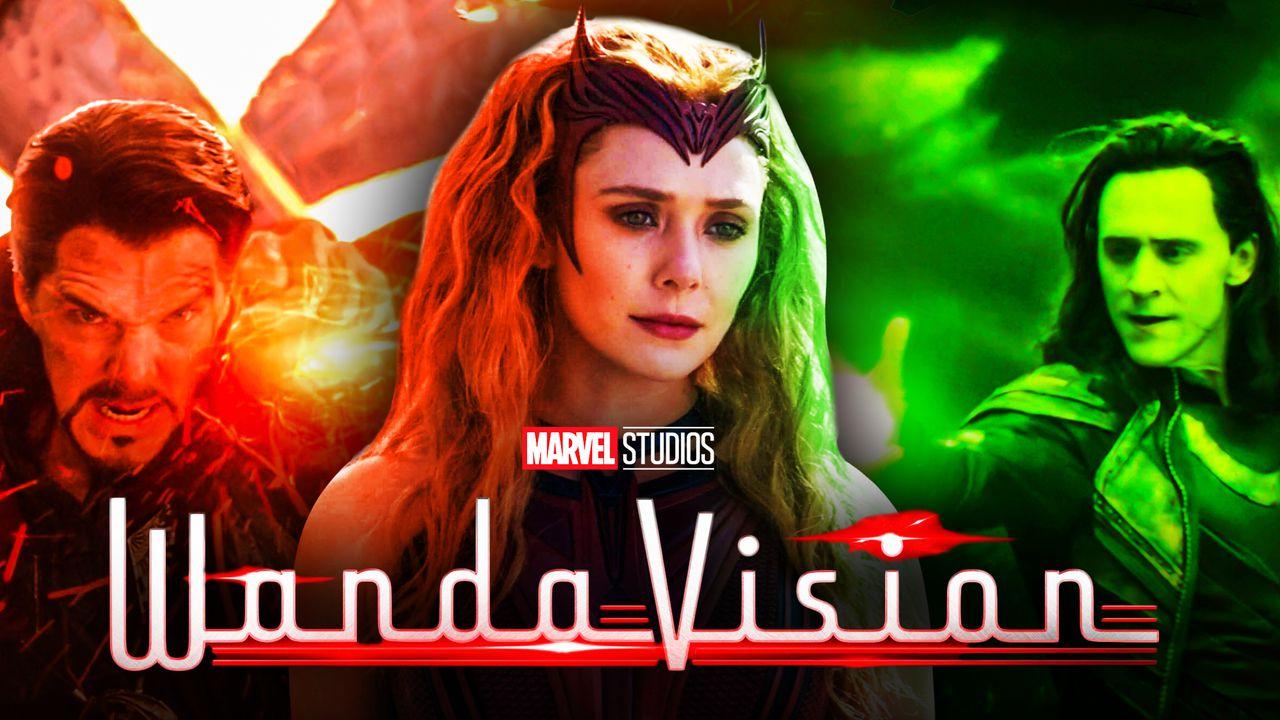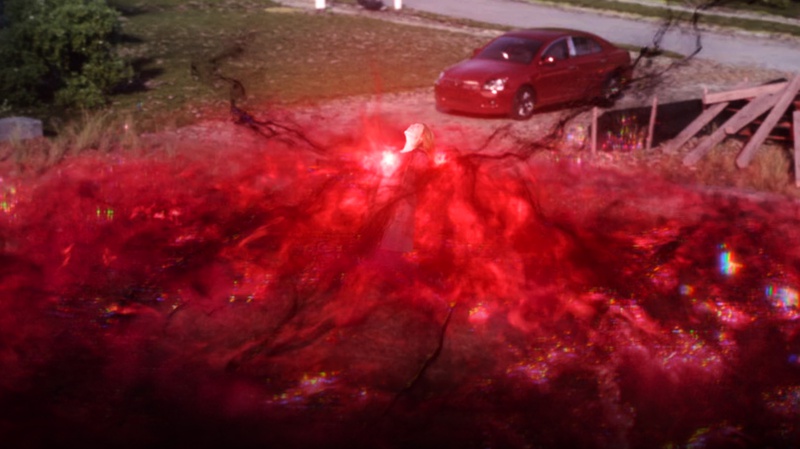
WandaVision already wrapped up its nine-episode run on Disney+ by showcasing Wanda Maximoff's transformation into the Scarlet Witch. The character's journey in the series was the main focus of the narrative, and it gave fans an in-depth look at the Avenger's emotional state as well as her incredible power set.
Throughout the limited season run of WandaVision , there were hints that Wanda was becoming more powerful like never before, and this was cemented by her transition into the Scarlet Witch alongside the reveal that the hero created an alternate sitcom reality within the confines of Westview, New Jersey.
The ramifications of Wanda's takeover in Westview are expected to be fully explored in future projects like Doctor Strange in the Multiverse of Madness . While fans wait for the character's next appearance, a new tidbit has emerged that provides insight into how the show emphasized the growing power-set of Wanda.
CREATING WANDA MAXIMOFF'S MAGIC IN WANDAVISION

WandaVision VFX supervisor Ralph Maiers recently sat down with Polygon to talk about the already-finished Marvel series, and one of the topics that were discussed was the effects that brought Wanda's magic to life.
Maiers opened up by saying that the process behind the creation of Wanda's magic took “multiple months of going back and forth” while also revealing other behind-the-scenes tidbits:
“It actually was multiple months of going back and forth, trying different things. Industrial Light and Magic was doing some, and some of the other vendors, so it would be cross-pollination between all of us, tied in through Tara. She ran the ‘This is the Marvel Universe standard for this’ aspect of things.”
Maiers then shared details about designing the magical abilities of Agatha Harkness, explaining that a fellow VFX supervisor told him that “it had to be in the vein of other witch magic:”
“But Agatha had no pre-existing magic in the MCU. Tara said it had to be in the vein of other witch magic, what she called ‘wiggly-woo.’ We had to be in that world, but it needed to be a little darker and scarier, more directed and tendril-y and attack-y. That’s where we ended up — it was literally a three- or four-month attack to get there, just trying different things.”
Once the design was approved, it was shared in the report that all the VFX vendors had to use “roughly the same effects” so that it would have a consistent feel from scene to scene throughout the show. Given that there are multiple scenes with both Wanda and Agatha, Maiers' VFX group was required to be aware of everything about the pair's magic and “how it was evolving” in the series.
This involved looking at past MCU films like Avengers: Age of Ultron , with Maiers pointing out that it included “more or less just adjusting how the magic was going to be approached differently” in WandaVision :
“Tara was instrumental in making sure we all connected on that. They would send us what ILM was doing, or whoever else was doing a sequence. Luckily for us, we had already done our homework. We were looking at the earlier movies, so we already had her look in the bag, we didn’t have too much trouble matching what was going on. It was more or less just adjusting how the magic was going to be approached differently here. In Age of Ultron , her effects are a little more orange-y and wispy. But they wanted it a little closer to Agatha’s here. They were trying to get them closer together in the world. So we made Wanda’s magic a little more tendril-y as well.”
Polygon also shared in its exclusive sitdown with Maiers that color was a key element in terms of knowing the difference between Wanda and Agatha's power set. Despite the freedom that Maiers and his team had in WandaVision , the VFX supervisor admitted that they were restricted on how other forms of magic were portrayed in the MCU such as the ones exhibited by Doctor Strange, Hela, and Loki:
“There’s a color palette in the Marvel Universe, and we had to be very careful not to cross-pollinate the color. We actually did quite a bit of testing to make sure we stayed out of the reds, because that’s Scarlet Witch’s world, and we stayed out of violet, because that’s somebody else’s world. We had to stay in these deeper purples. And that becomes Agatha’s color. And now the colors we used will be posted in the Marvel universe, she’ll own those. As the origin-story creators, we got to be the ones to establish that color.”
THE MCU'S MAGIC EXPLORED
No doubt, creating the visual effects of the power-sets of MCU heroes is not an easy task, and this latest interview essentially proved that. Maiers' comments of the team having to go through “multiple months of going back and forth” to find the right design is proof of how Marvel Studios closely monitors the process of showcasing the abilities of its heroes on-screen.
It's no secret that the witch powers of Agatha Harkness in WandaVision were featured uniquely, and incorporating a purple-centric design for the character achieved the dark and scary aspect that the VFX team was trying to achieve. By showing off the “wiggly-woo” approach, it helped viewers understand that the villain was a witch from the get-go.
Given that the MCU is home to a lot of magic users, the restrictions that were implemented for WandaVision 's VFX team made narrative sense. Considering that the story's focus is on Wanda, it was important for the character's Hex to stand out so that the hero's powers had a distinctive feel when featured side-by-side with the likes of Doctor Strange and Loki.
The MCU thrives on consistency, and the trend continued during WandaVision . Maiers' remarks about looking at past films to serve as a guide in terms of showing Wanda's powers clearly worked while also adding their own flavor to emphasize the character's evolution into a more powerful individual.
Whatever the case, the MCU's version of magic is set to be front and center in the massive Phase 4 slate of the franchise, and it seems that the VFX team of Marvel Studios will look to find ways on how to keep the momentum of showcasing it consistently along the way.
WandaVision is now streaming on Disney+.












